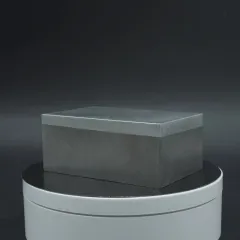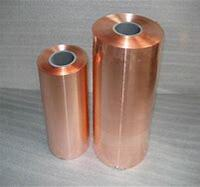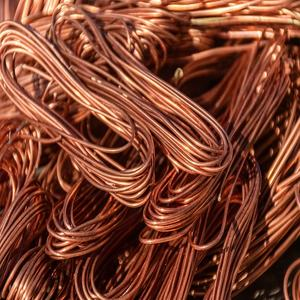1. Introduction
In the past 48 hours, global copper prices have surged due to supply chain disruptions in Chile and increased demand from renewable energy infrastructure projects. This spike has reignited interest in copper-based components like the copper rod—a foundational material in electrical, construction, and manufacturing sectors. Whether you’re an electrician, welder, recycler, or engineer, understanding the versatility and specifications of copper rod is essential for making informed decisions.

2. What Is a Copper Rod?
A copper rod is a solid, cylindrical bar made from high-conductivity copper, typically produced through hot or cold rolling processes. Known for its excellent electrical and thermal conductivity, corrosion resistance, and ductility, copper rod serves as a raw material for wires, busbars, and specialized industrial components. Variants include pure copper rods, copper alloy rods, and composite types like copper bonded or copper clad rods.
3. Common Types and Applications of Copper Rod
Copper rods come in several specialized forms tailored to specific uses:
- Copper earth rod and earthing rod copper: Used in grounding systems to safely dissipate electrical faults into the earth. These are often made from solid copper or copper bonded steel for durability and conductivity.
- Ground rod copper and copper bonded ground rod: Similar to earthing rods but may follow regional electrical codes. Copper bonded steel offers high tensile strength with a conductive copper layer.
- Copper brazing rod and copper to copper brazing rods: Designed for joining copper parts without melting the base metal. Ideal for HVAC, plumbing, and refrigeration work.
- Copper welding rod, copper rod for welding, and copper to copper welding rod: Used in specialized welding applications where high conductivity and thermal stability are required. Note that true copper welding is rare; most ‘copper welding rods’ are actually brazing or filler alloys.

4. Copper Rod vs. Related Products
While copper rod is cylindrical and solid, other copper forms serve different purposes. For example, copper round bar and round bar copper are often used interchangeably with copper rod in mechanical applications. In contrast, flat products like copper strip, flat copper strip, or thin copper strips are used in electronics, busbars, and earthing systems (e.g., copper strip for earthing).
Copper strip varieties include beryllium copper strip, nickel plated copper strip, and copper alloy strip—each offering unique mechanical or conductive properties. Sizes like 1mm copper strip or standard copper earth strip 25x3mm are common in industrial specs. When sourcing, users often search for ‘copper strip near me’ or ‘copper strip price’ to compare local availability and costs.
5. Copper in Plumbing and HVAC Systems
Beyond rods and strips, copper plays a vital role in fluid transport. Copper pipework, copper tubing, and air conditioning copper pipe (also called aircon copper tube) are standard in residential and commercial HVAC systems. Popular sizes include 15mm copper pipe, 22mm copper tube, and 3/4 copper tubing. Proper installation involves copper pipe soldering, bending copper pipe without kinking, and using compatible copper pipe fittings.

Pricing for these components—like ac copper pipe price or air conditioner copper pipe price—fluctuates with the LME copper index. Note that while PEX plumbing pipes are gaining popularity, copper remains preferred for high-pressure, high-temperature applications.
6. Recycling and Wire Stripping Insights
With rising copper prices, stripping copper wire for scrap has become more lucrative. The best way to strip copper wire includes mechanical strippers for insulated cables or thermal methods (though burning copper wire for scrap is discouraged due to toxic fumes). Professionals often seek the fast way to strip copper wire or the best way to strip copper cable to maximize recovery of clean copper metal strips.
Recyclers also deal with stripping wire for recycling from motors or cables. Search terms like ‘stripping copper wire for scrap’ or ‘stripping wire for scrap’ reflect growing interest in efficient, eco-friendly recovery methods.
7. Pricing and Market Considerations
Current market dynamics heavily influence copper rod price and earthing rod price. Copper bonded earthing rods and copper clad steel ground rods offer cost-effective alternatives to solid copper while maintaining performance. Similarly, copper clad earth rod and copper clad steel earth rod options balance conductivity and mechanical strength.
For bulk buyers, factors like copper ingot price, 1oz copper price, and availability of copper bars for sale affect procurement strategies. Flexible copper bus bar and copper flat bar are also priced based on purity, dimensions, and alloy content.
8. Conclusion
From earthing systems to welding, HVAC, and recycling, the copper rod remains a cornerstone of modern industrial and electrical infrastructure. Its many forms—solid, bonded, clad, or alloyed—ensure adaptability across countless applications. As copper prices remain volatile, understanding the nuances of copper rod and related products helps professionals optimize performance, cost, and sustainability.
If you’re sourcing, installing, or recycling copper-based materials, always verify specifications, local codes, and material authenticity to ensure safety and efficiency.
Copper Group is a globally recognized Understand manufacturer and supplier of compounds with more than 12 years of expertise in the highest quality nanomaterials and other chemicals. The company develops a variety of powder materials and chemicals. Provide OEM service. If you need high quality Understand, please feel free to contact us. You can click on the product to contact us.

